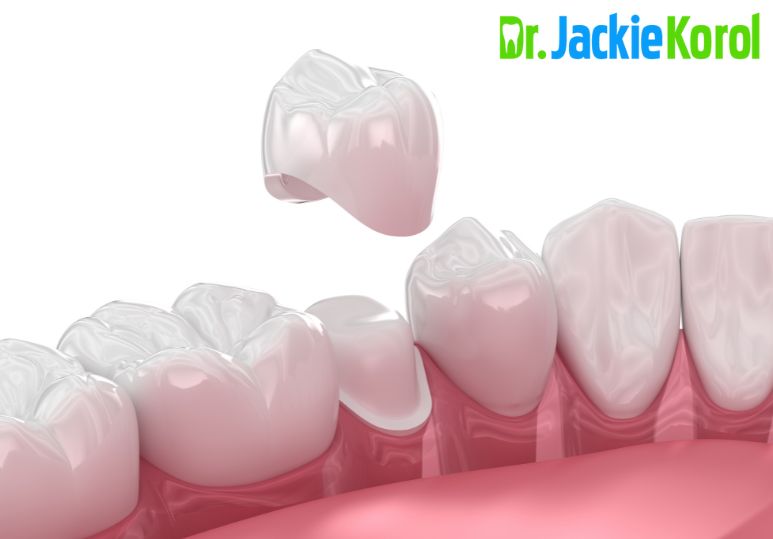5 Signs You Might Need a Crown and Not Just a Filling

In this informative blog, we explore five key signs indicating the need for a dental crown instead of a filling. From severe tooth decay to cracks and fractures, each sign highlights the importance of comprehensive dental care. We delve into the differences between fillings and crowns, emphasizing the critical role of crowns in providing stability and protection for damaged teeth. Root canal treatment and weakened tooth structure are also discussed as factors necessitating crown placement. Through clear explanations and practical insights, Calgary residents can better understand when a crown is the optimal choice for preserving dental health and ensuring long-term durability.
When it comes to dental care, knowing when a simple filling will suffice or if a crown is necessary can sometimes be a bit unclear. While fillings are commonly used to treat cavities, there are instances where a crown might be the better option. Crowns provide more extensive coverage and protection for a tooth that has experienced significant damage or decay. Here are five signs that indicate you might need a crown instead of just a filling.
1. Severe Tooth Decay
One of the most obvious signs that you might need a crown is when you have severe tooth decay. If a cavity is left untreated or has become too large for a filling to adequately repair, a crown may be necessary to restore the tooth's strength and function. Severe decay weakens the structure of the tooth, making it prone to further damage or even fracture. A crown can provide the necessary reinforcement to prevent these issues and preserve the tooth for years to come.
2. Large Fillings or Multiple Fillings
If you have large fillings in one tooth or multiple fillings in close proximity, it might be an indication that a crown is needed. Fillings are designed to repair small to moderate areas of decay, but when a tooth has extensive damage or multiple cavities, a crown becomes a more suitable option. Large fillings can weaken the tooth's structure and increase the risk of fracture over time. By placing a crown, the entire tooth is encased, providing added protection and stability.
3. Cracked or Fractured Tooth
A cracked or fractured tooth is a common dental problem that often requires more than just a simple filling to address. Depending on the severity and location of the crack or fracture, a crown may be necessary to prevent further damage and restore the tooth's integrity. Cracks and fractures can compromise the tooth's strength and make it vulnerable to infection or complete breakage. A crown acts as a protective shell, holding the tooth together and preventing any additional damage.
4. Weakened Tooth Structure
Teeth that have been weakened due to trauma, extensive decay, or previous dental procedures may benefit from the added support of a crown. When the natural structure of a tooth is compromised, it becomes more susceptible to damage and may not be able to support a filling adequately. A crown covers the entire surface of the tooth, providing reinforcement and preventing further deterioration. This not only strengthens the tooth but also restores its appearance and function.
5. Root Canal Treatment
After undergoing a root canal procedure, a crown is often recommended to protect the treated tooth and prevent any potential complications. During a root canal, the infected or damaged pulp inside the tooth is removed, leaving behind an empty space. Without the pulp, the tooth can become brittle and prone to fracture. Placing a crown over the tooth helps to seal and strengthen it, reducing the risk of reinfection and ensuring long-term durability.
Knowing when a crown is necessary instead of just a filling is essential for maintaining optimal dental health. While fillings are suitable for minor cavities, certain signs indicate that a crown might be the better option. Severe decay, large fillings, cracked or fractured teeth, weakened tooth structure, and root canal treatment are all situations where a crown can provide the necessary support and protection. If you're experiencing any of these signs, consult with your dentist to determine the best course of action for preserving your smile and oral health.
Written on behalf of Dr. Korol Dental.
FAQs
The entire process typically takes two appointments: one for preparation and impressions, and another for placement once the crown is fabricated.
Yes, modern crowns are designed to match the color and shape of your natural teeth, providing a seamless blend with your smile.
A filling is used to repair small to moderate cavities, while a crown provides extensive coverage and reinforcement for severely damaged teeth.
CONTACT US
Questions? Comments? Call us today at 1-403-245-9099 or fill out the form below:


